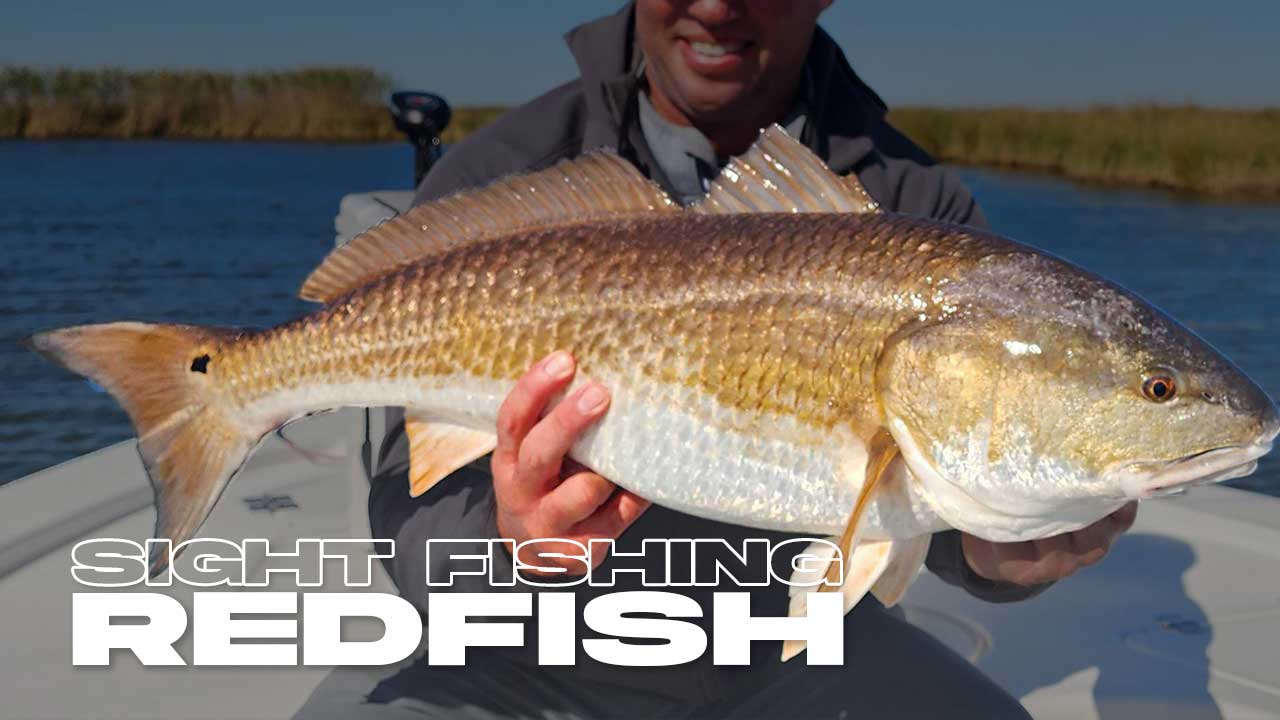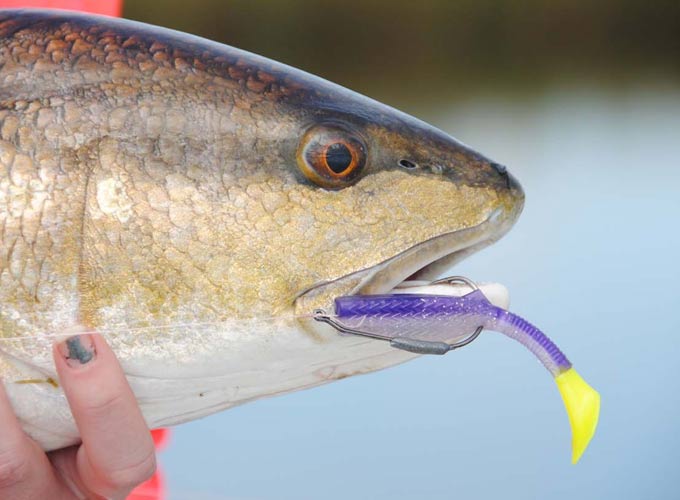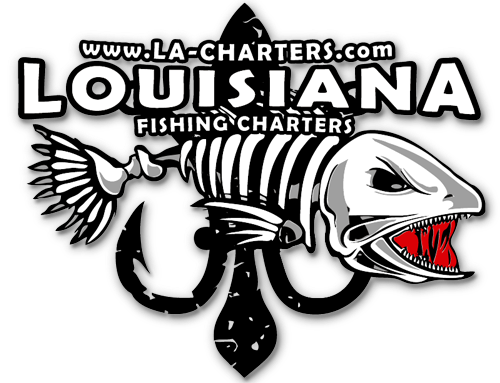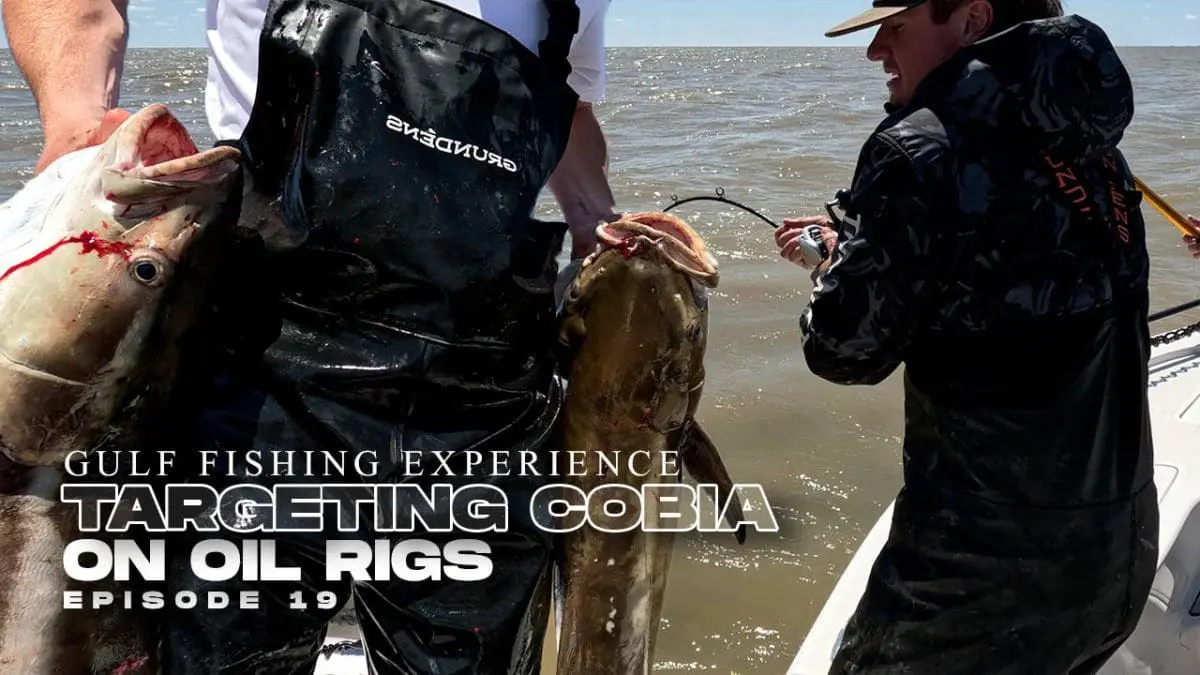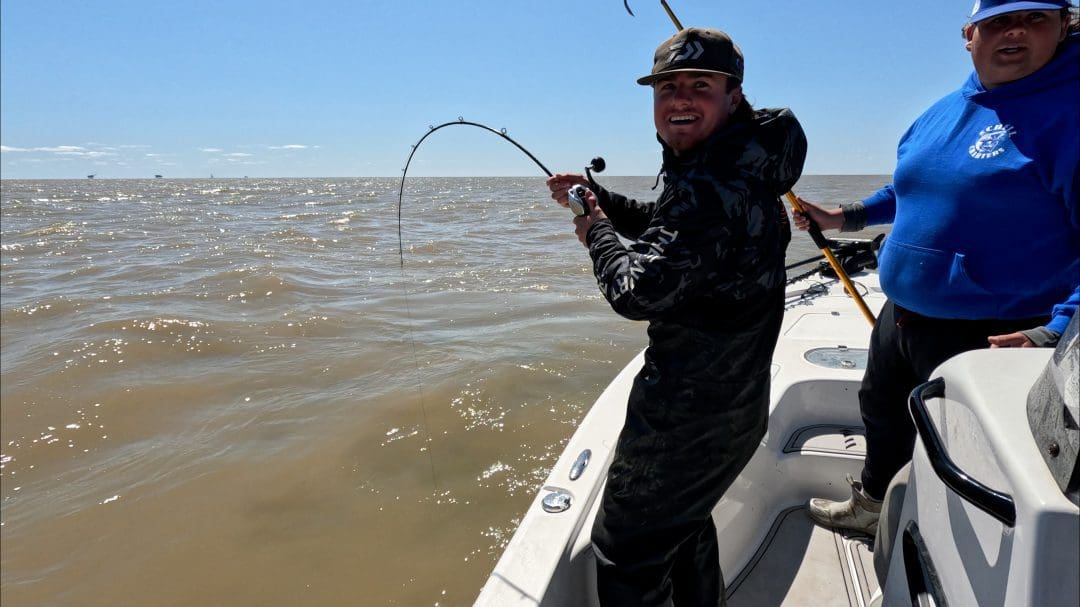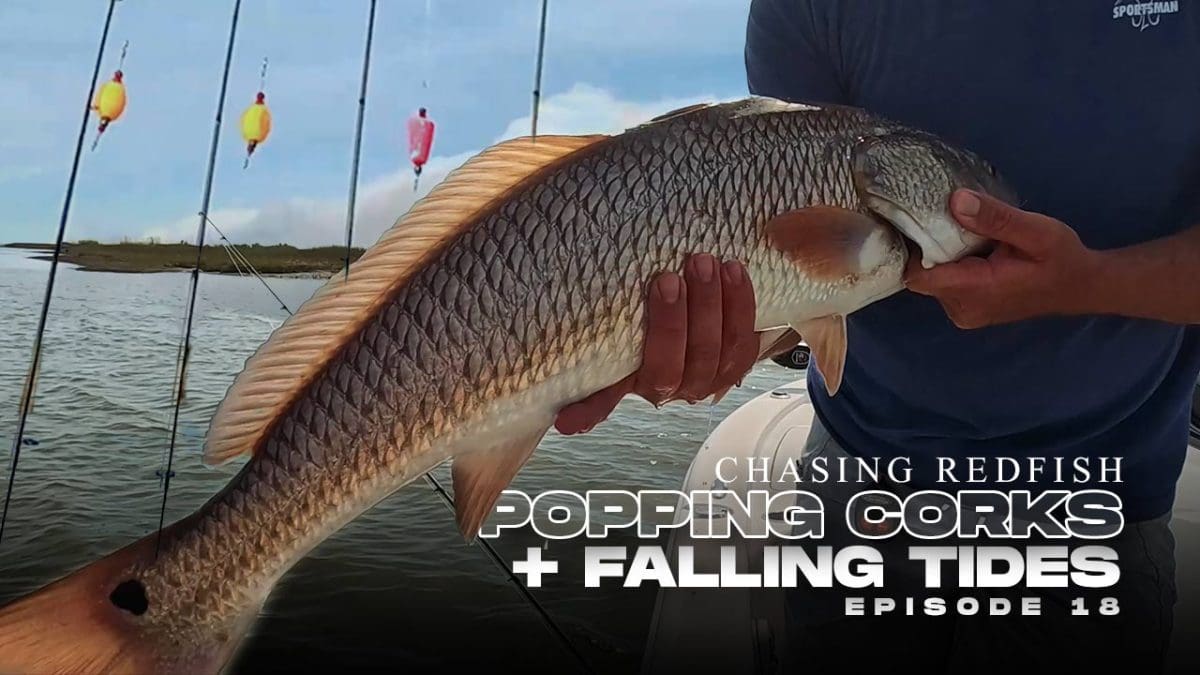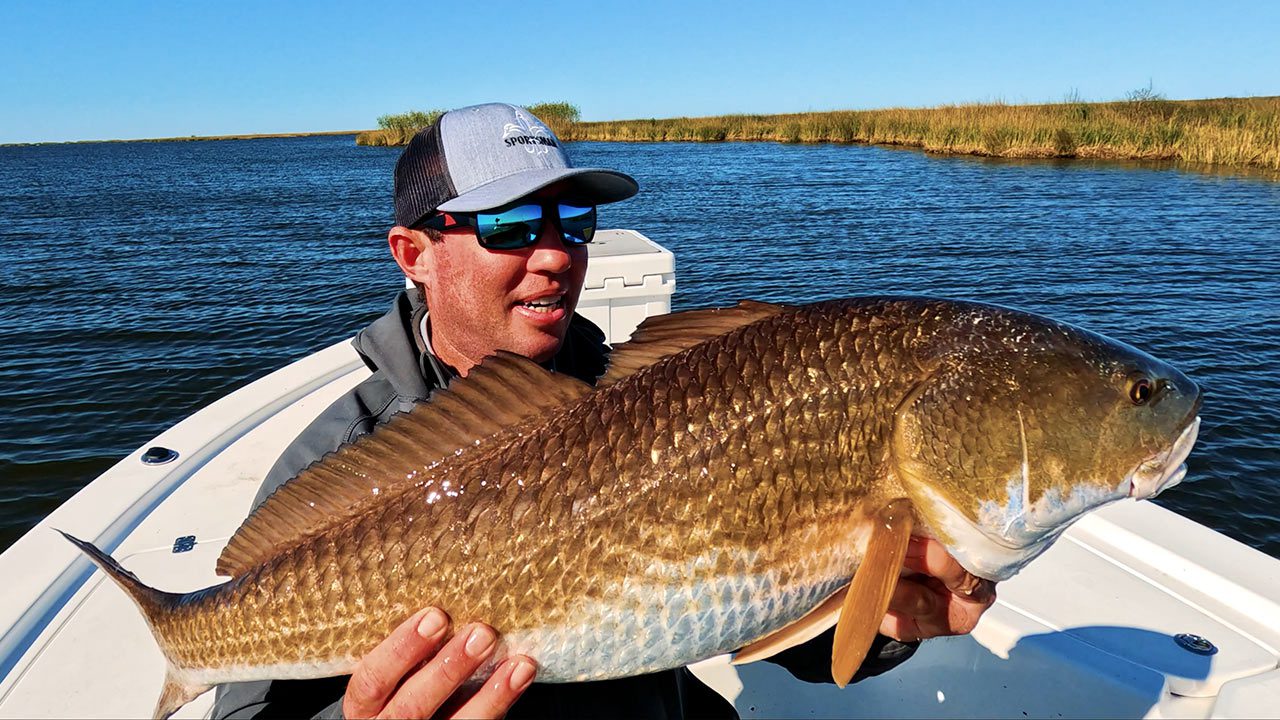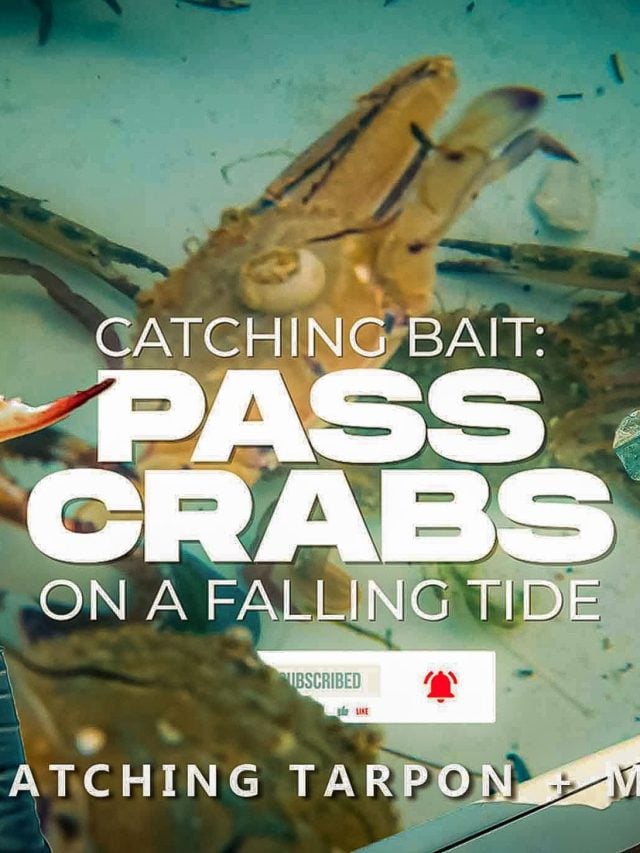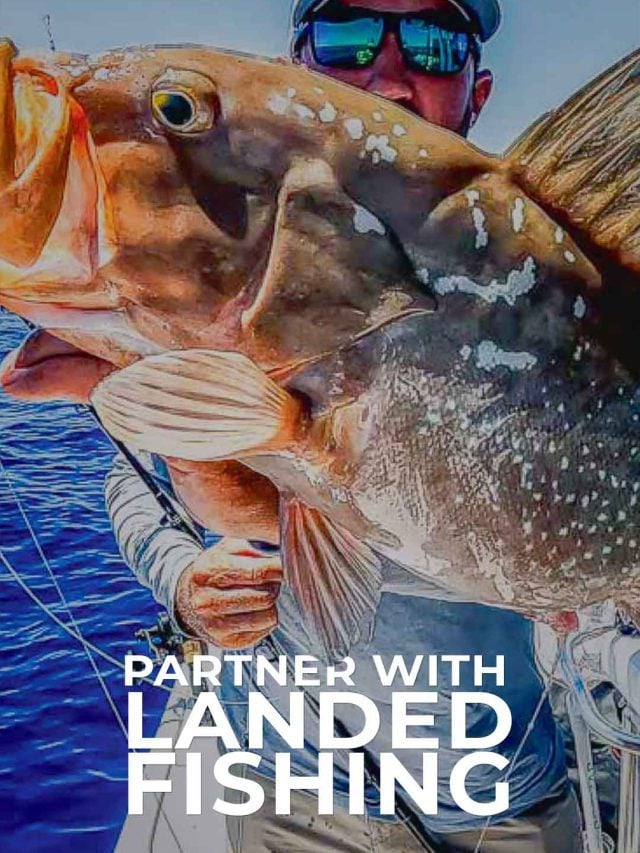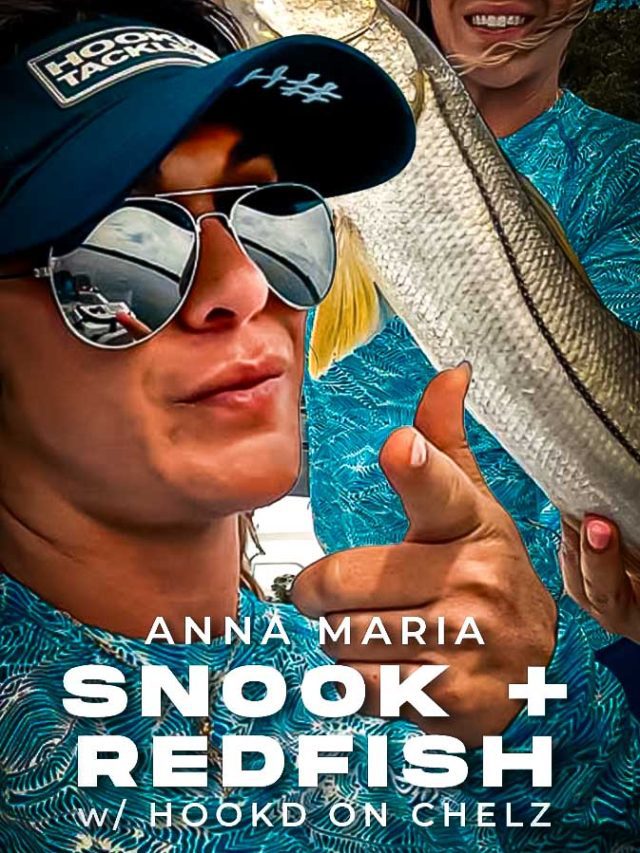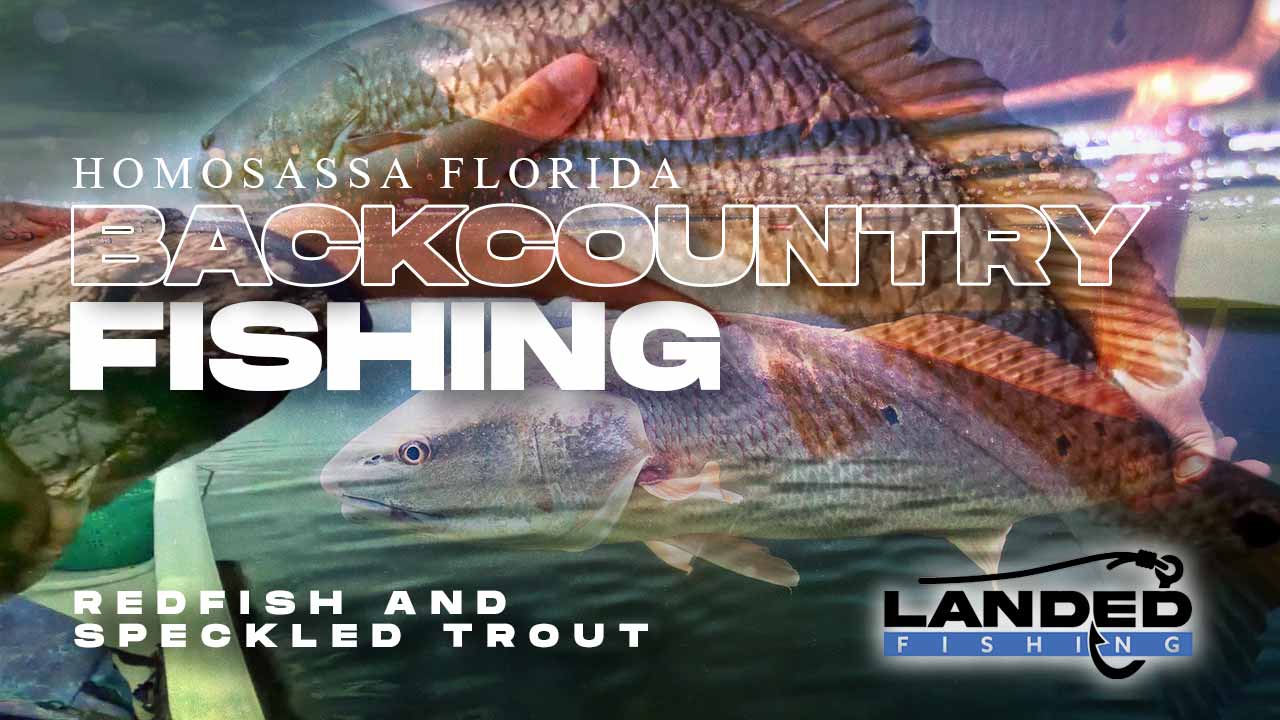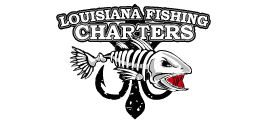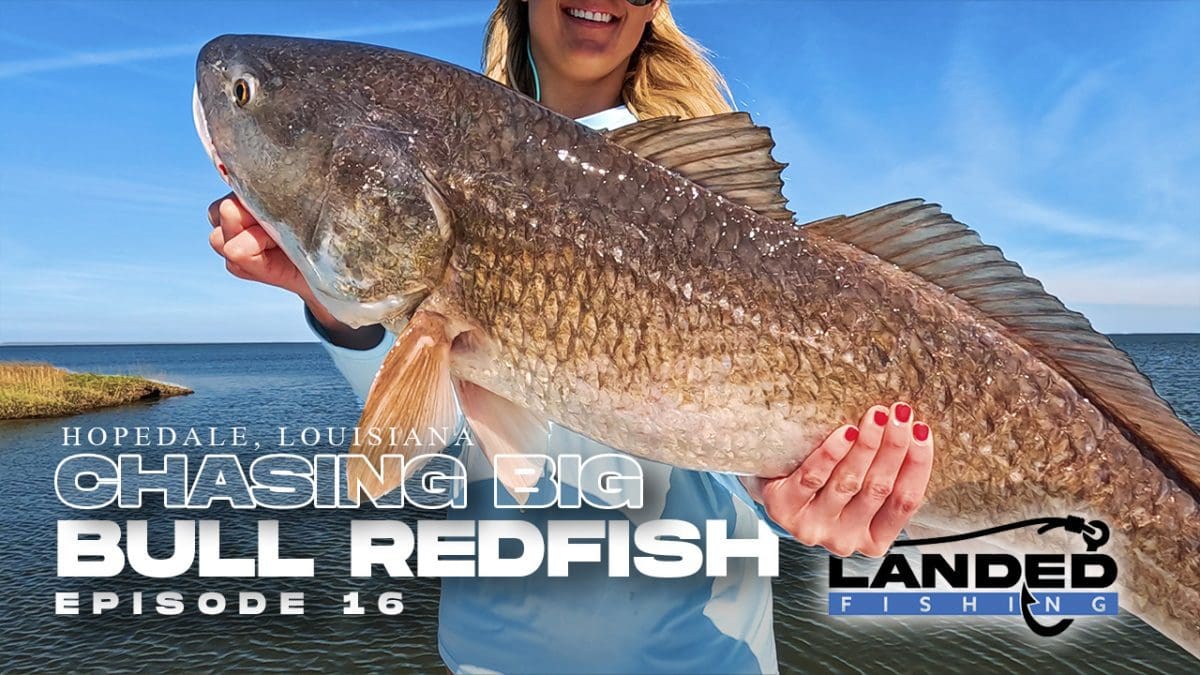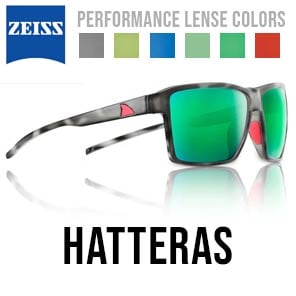Sight Fishing Redfish in the Gulf of Mexico
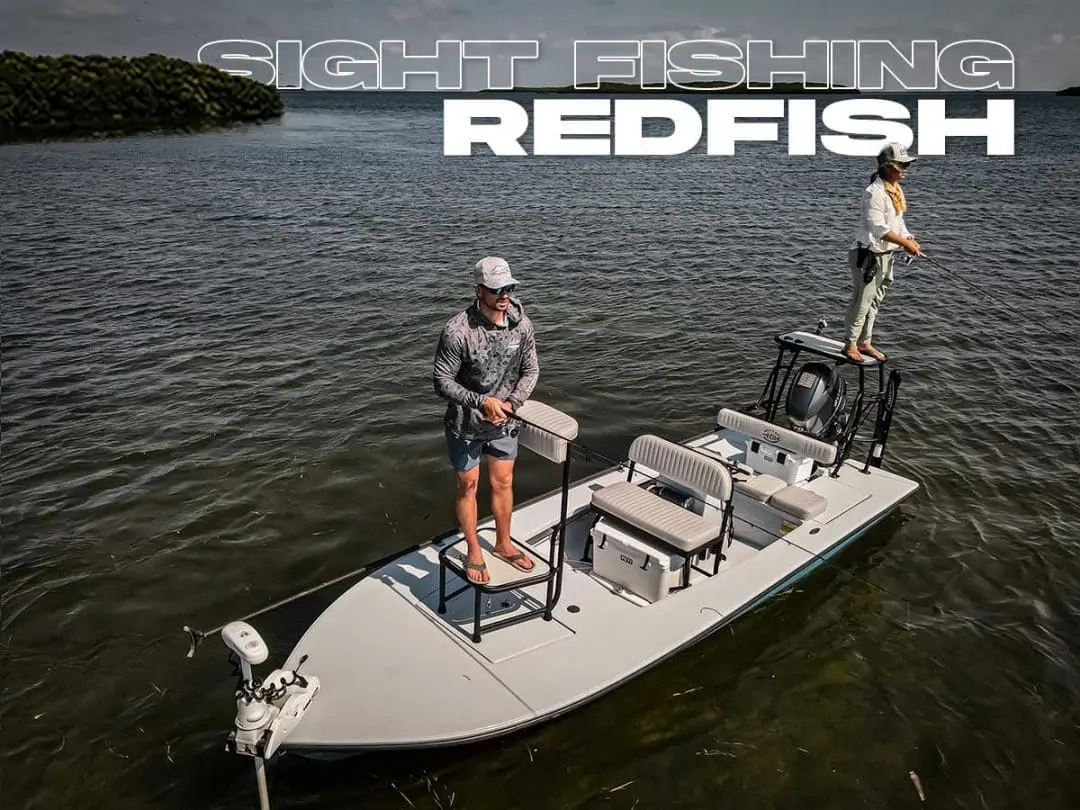
It involves stalking Red fish in shallow waters, making a perfect cast, and experiencing their explosive strikes and acrobatic fights. It’s a memorable experience for both experienced and novice anglers alike.
Redfish (Saltwater Inshore Fish)

Redfish, also known as red drum, are a popular game fish for inshore anglers. They are known for their hard fights and can be caught using a variety of techniques.
Redfish are found in coastal waters and estuaries along the Atlantic and Gulf coasts of the United States.
They are known for their bronze-red coloration and distinctive black spot near the tail. Redfish are bottom feeders that prefer shallow waters with structures such as oyster beds, grass flats, and docks.
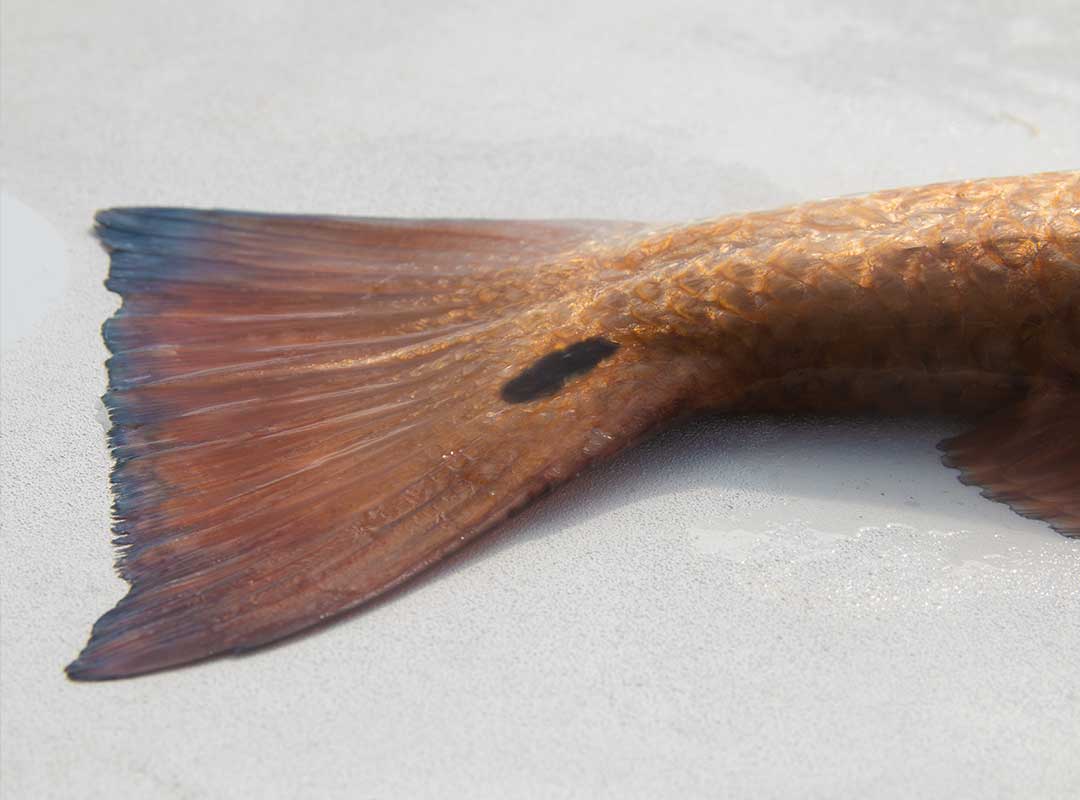
Pro Tips for Sight Fishing Redfish
Sight fishing for redfish can be challenging, exciting and very rewarding. By following these a few simple tips, you can increase your chances of finding and catching this sought-after game fish.
Move slowly and quietly to avoid spooking the fish, and look for tail or fining to indicate their location. When casting, aim ahead of the fish’s path, and vary your retrieve speed and technique until you find what works.
Redfish can be picky eaters, so experimenting with different presentations can also increase your chances of success.
Sight Fishing Red Drum
Optimal fishing times for redfish are early morning before the sun warms up the shallows and late afternoon when fishing in deeper water structures such as jetties, wrecks, and bridges.
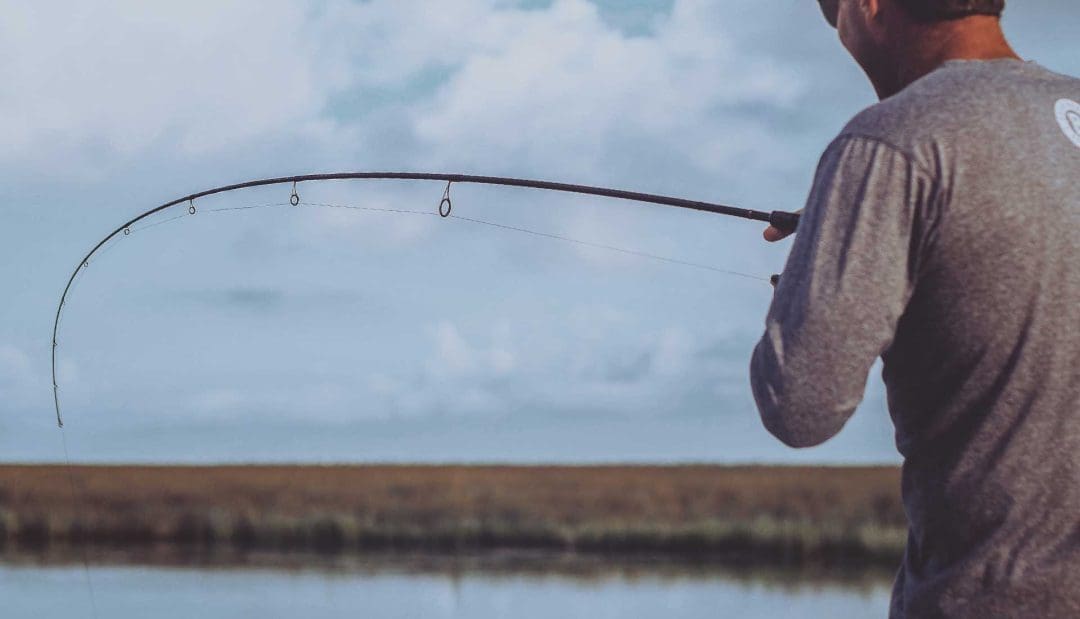
Adjust your casts to target the area surrounding or in front of the school of fish.
Avoid casting directly into the center of the school
Late summer and mid-fall, particularly in grassy flats, offer the best season for targeting redfish.
October is considered the prime month for catching redfish as the water begins to cool.
Effective lures for redfish are 3 to 5-inch white paddle tails paired with red jig heads weighing between 1/8 and 1/2 ounce, or slow-moving weedless gold spoons near the bottom of the water column.
The Best Spots to Sight Fish for Redfish
US coastal states along the Gulf of Mexico are well-known for their exceptional sight fishing opportunities for Redfish.
To locate the best spots for targeting this species, factors such as water depth and structure must be taken into consideration.
Shallow Water Habitats for Redfish
In Louisiana, the marshes and bayous provide ample shallow-water habitats that Redfish thrive in, making it an ideal location for sight fishing.
Texas, on the other hand, boasts a variety of structures including jetties, flats, and marshes that provide suitable habitats for Redfish.
Redfish in Flats and Inlets
The Florida Panhandle is another area where sight fishing for Redfish is popular, particularly in the shallow flats and inlets that can be found along the coast.
Finding the Best Redfish Structure
When searching for the best spots for sight fishing for Redfish in the Gulf of Mexico, it’s important to look for areas with diverse structures such as oyster beds, mangroves, and grassy flats. These structures serve as natural habitats for Redfish and can provide opportunities to spot and target these fish.
Oyster Beds, Mangroves and Grass Flats are prime locations to Sight Fish for Redfish
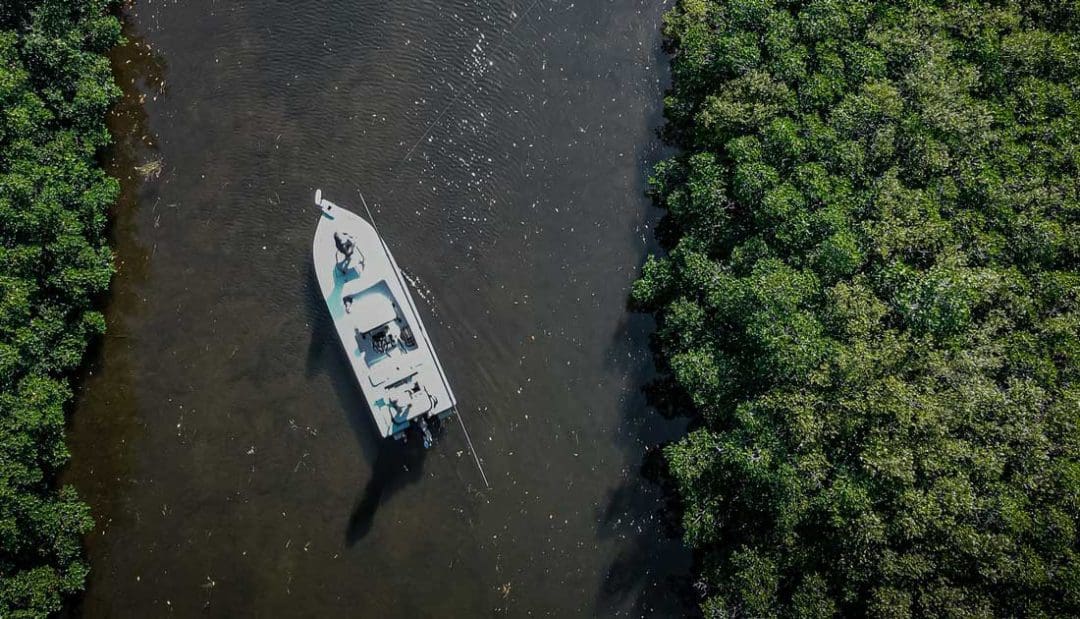
Fish Channels, Drop Offs and Other Changes in Water Depth for Redfish
Keep in mind, Redfish tend to congregate in areas with changes in water depth, such as channels or drop-offs, making these areas prime locations for sight fishing.
The Gulf of Mexico offers a range of suitable habitats and structures for sight fishing for Redfish, and exploring different areas can lead to discovering new and exciting spots.
Finding redfish can be challenging for some anglers, especially for those new to inshore fishing.
Maximize Your Redfish Catch with Expert Tips from Landed Fishing!
Check out the channel and subscribe for more!
Redfish During Tides
Predatory fish such as redfish tend to be more active and easier to locate during tidal movements, making it an optimal time for sight fishing.
High Tide Redfish:
Grass flats are shallow areas with underwater grass beds that provide cover and food for various marine species, including redfish.
During high tide, the water level rises, and the grass flats become flooded, creating an ideal feeding ground for redfish.
These fish will move into these areas to feed on baitfish and crustaceans, such as shrimp and crabs, which are abundant in the grass beds.
Low Tide Redfish:
During low tide, they will move to deeper waters such as channels and holes. Additionally, redfish can be found in estuaries, bays, and lagoons, especially those with a mix of fresh and saltwater.
It is important to research the specific location you plan to fish in and take note of the tides and structure present to increase your chances of finding and catching redfish.
Sight Fishing for Redfish with Artificial Lures
Soft plastic baits: These versatile lures can imitate a variety of prey and can be rigged to mimic shrimp, crabs, or small baitfish. Popular options include the Berkley Gulp! Saltwater Shrimp and Z-Man Trout Trick.
Topwater lures: These lures create a commotion on the surface of the water that can entice redfish to strike. The Heddon Super Spook Jr. and the Rapala Skitter Walk are popular choices.
Jigs: Jigs are effective for sight fishing because they allow you to control the depth and speed of your lure. The Strike King Saltwater Flats Jighead and Z-Man Trout Eye Jighead are popular options.
Spoons: These lures have a distinctive wobbling action that can attract redfish from a distance. The Johnson Silver Minnow and the Capt. Mike’s Spoon are popular choices.
Sight fishing for redfish with artificial lures is popular for targeting specific fish and mimicking natural prey.
Sight Fishing for Redfish with Live Bait
Shrimp: Live shrimp are a natural prey for redfish and can be fished on a jighead or Carolina rig.
Crabs: Blue crabs or fiddler crabs can be effective when fishing in shallow water and around oyster beds.
Shad: Also known as pogies, these baitfish are popular for live bait fishing and can be fished on a Carolina rig or under a popping cork.
Mullet: Finger mullet or live mullet can be fished on a Carolina rig or free-lined.
Pinfish: These small baitfish can be fished on a jighead or Carolina rig and are especially effective when fishing around structure such as docks or mangroves.
If you prefer to use live bait when sight fishing for redfish, here are the top 5 choices:
When sight fishing for redfish with artificial lures or live bait, it’s important to match your presentation to the conditions and the behavior of the fish.
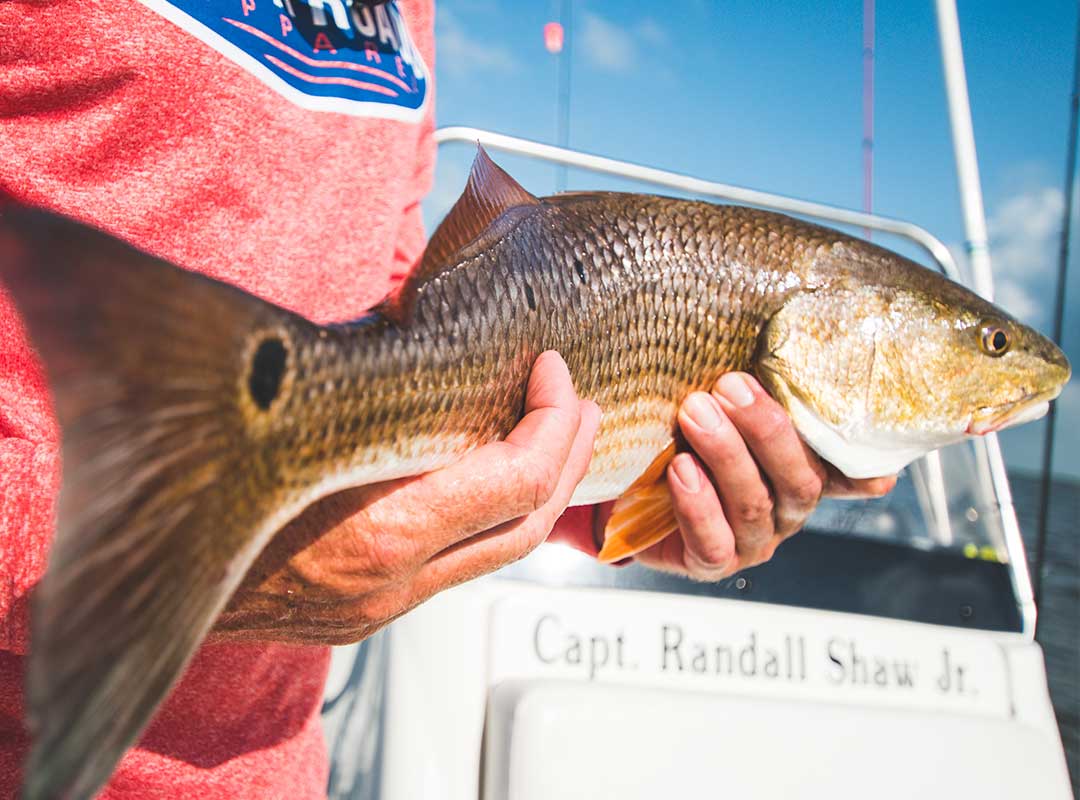
Experiment with different lures and techniques until you find what works best for you.
Where to Catch Gulf Coast Redfish
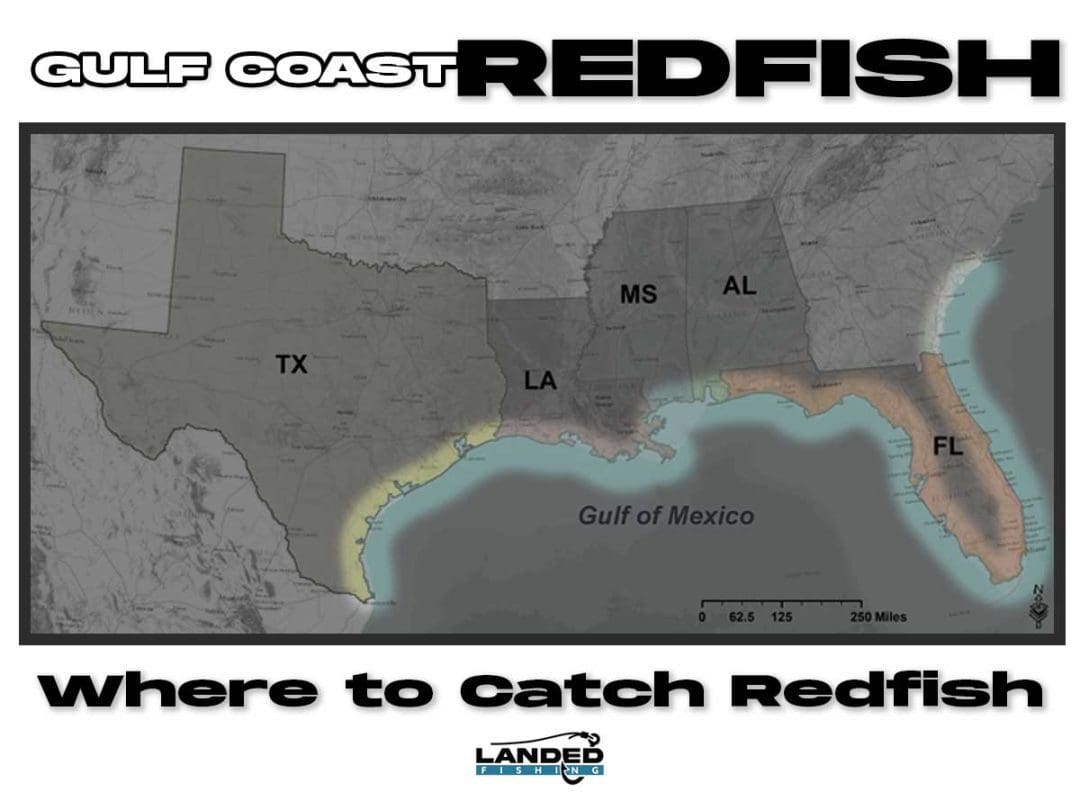
Redfish Bag Limits by US State
| State | Bag Limit | Link to Fish and Wildlife Website |
|---|---|---|
| Alabama | 3 fish per person/day | https://www.outdooralabama.com/fishing/saltwater-fishing |
| Florida | 1 fish per person/day | https://myfwc.com/fishing/saltwater/recreational/red-drum/ |
| Georgia | 5 fish per person/day | https://gadnr.org/fishing-regulations |
| Louisiana | 5 fish per person/day | https://www.wlf.louisiana.gov/fishing/saltwater-rules-regulations |
| Mississippi | 3 fish per person/day | https://www.mdwfp.com/fishing-boating/saltwater-fishing/regulations/ |
| North Carolina | 1 fish per person/day | https://www.ncwildlife.org/Fishing/Laws-Safety/Saltwater-Fishing |
| South Carolina | 3 fish per person/day | https://www.dnr.sc.gov/lawsregs/saltwaterregs.html |
| Texas | 3 fish per person/day | https://tpwd.texas.gov/regulations/outdoor-annual/fishing/ |
| Virginia | 3 fish per person/day | https://www.mrc.virginia.gov/regulations/swrecfishingrules.shtm |
It’s important to note that bag limits can vary by season, size, and location, so be sure to check the specific regulations for the area you plan to fish.
Best time of Day for Sight Fishing Redfish
Early Morning Redfish
Redfish tend to be more active and feed actively during the first few hours after sunrise.
Late Afternoon Redfish
The period leading up to sunset is another prime time for redfish activity, as the water begins to cool down and baitfish become more active.
Midday Redfish
During hot midday periods, redfish may retreat to deeper water and become less active. However, this can vary depending on the season and weather conditions.
Night Fishing
Nighttime can be a productive time for fishing, as redfish may move into shallower water to feed under the cover of darkness.
The best time of day for sight fishing for redfish can vary based on location, season, and weather. Being flexible and adapting your approach is key.
Fishing Grass Flats for Redfish
Watch Episode 17:
What to Look for When Sight Fishing Redfish
Look for Structure:
Redfish are often found around structure such as docks, mangroves, and oyster beds. These structures provide cover and food for redfish, making them a prime location for finding them.
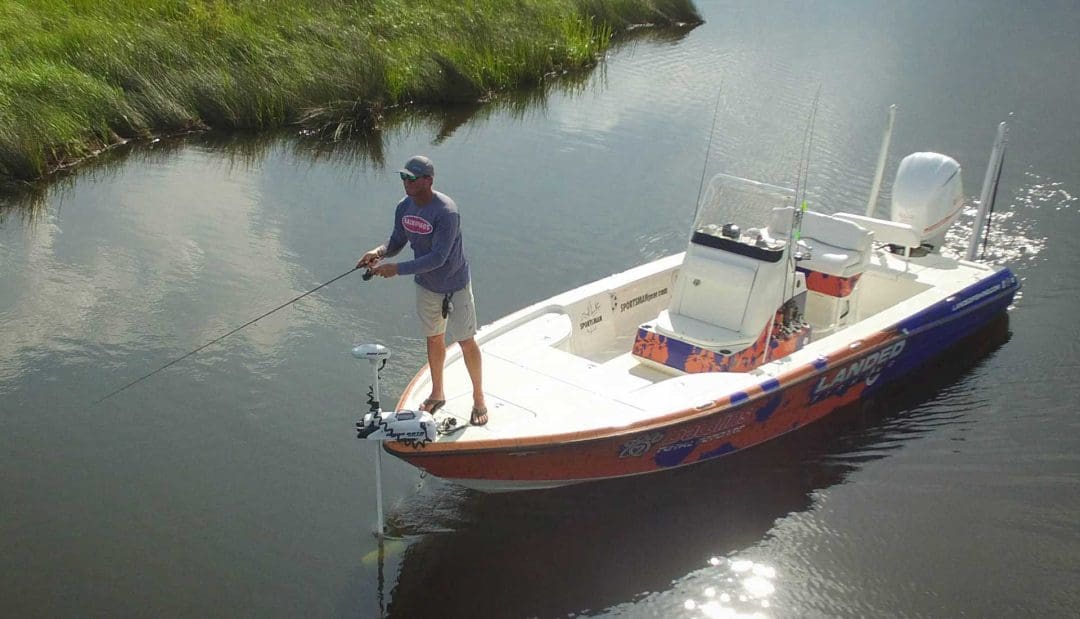
Fun Redfish Fact:
Redfish “finning” is when the fish floats with its dorsal and tail fins above water. Each redfish has a unique signature on its tail which can be used to identify individual fish.
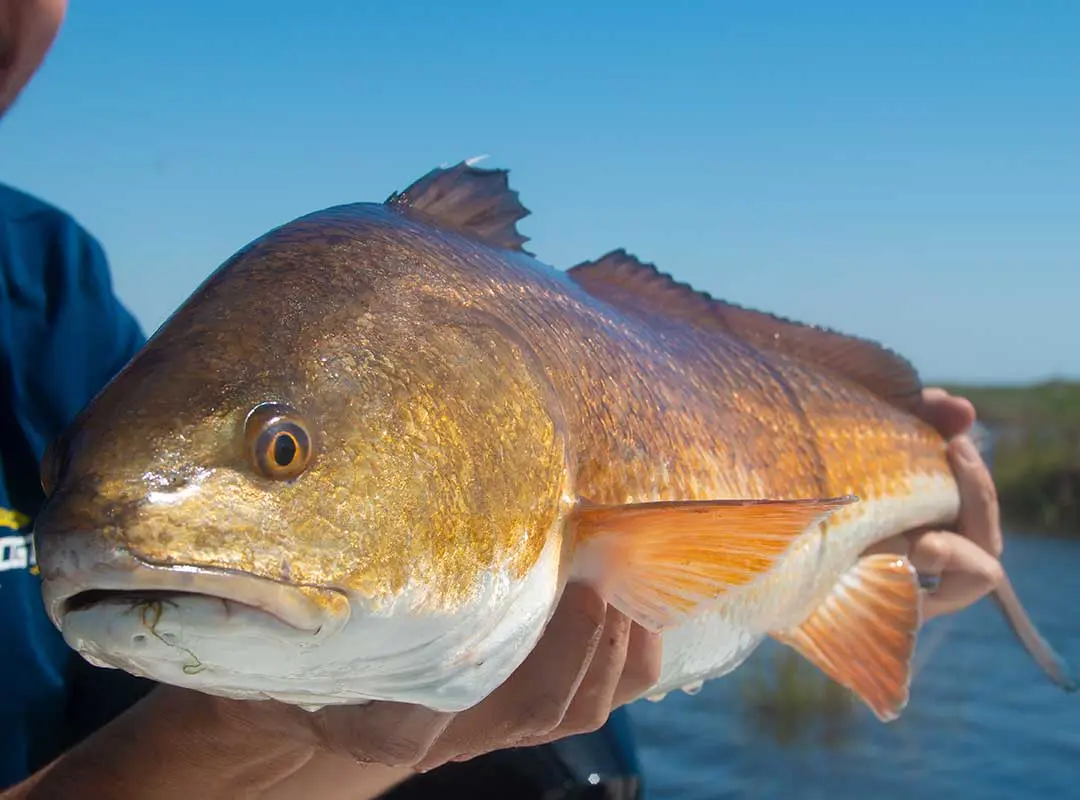
When sight fishing for redfish, it’s important to aim your casts around or in front of the school of fish instead of casting directly in the middle of the school. This avoids spooking the fish and disrupting the school, increasing your chances of success.

How to Sight Fish and Catch Redfish
1.) Check the Tides:
Redfish are known to feed during incoming and outgoing tides.
During the incoming tide, they will move into shallow waters to feed, and during the outgoing tide, they will move to deeper waters. Knowing the tide schedule can help you plan your fishing trip accordingly.
2.) Watch for Baitfish:
Redfish feed on small baitfish such as mullet and pinfish.
Keep an eye out for baitfish activity, such as jumping or fleeing, as this can indicate the presence of redfish in the area.
3.) Look for Mud Boils:
Redfish are known to create mud boils when feeding in shallow waters.
These mud boils are created by their tails stirring up the bottom sediment, creating a visible disturbance on the surface.
4.) Follow the Birds:
Birds such as seagulls and pelicans can help you locate redfish.
These birds often feed on the same baitfish as redfish, so if you see a flock of birds diving into the water, it’s a good sign that there are redfish in the area.
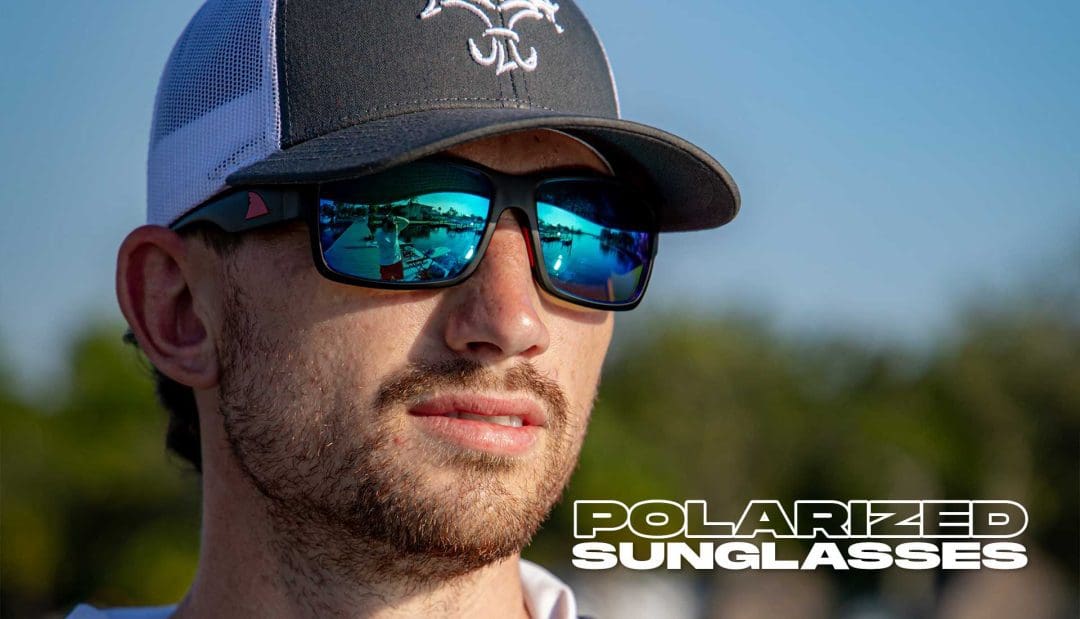
5.) Proper Eyewear
To better sight fish for redfish, it is important to use polarized sunglasses to see through the water’s surface glare and spot redfish.
Sight fishing for redfish is a thrilling and exciting experience that requires precision and patience.
A key to successful sight fishing is precision casting.
Redfish require a precise presentation, and the angler must make a perfect cast to avoid spooking the fish. The angler must be ready to strike as soon as the redfish takes the bait, as they put up a fight that can last for several minutes. Landing a trophy redfish is the ultimate reward for a successful sight fishing expedition.
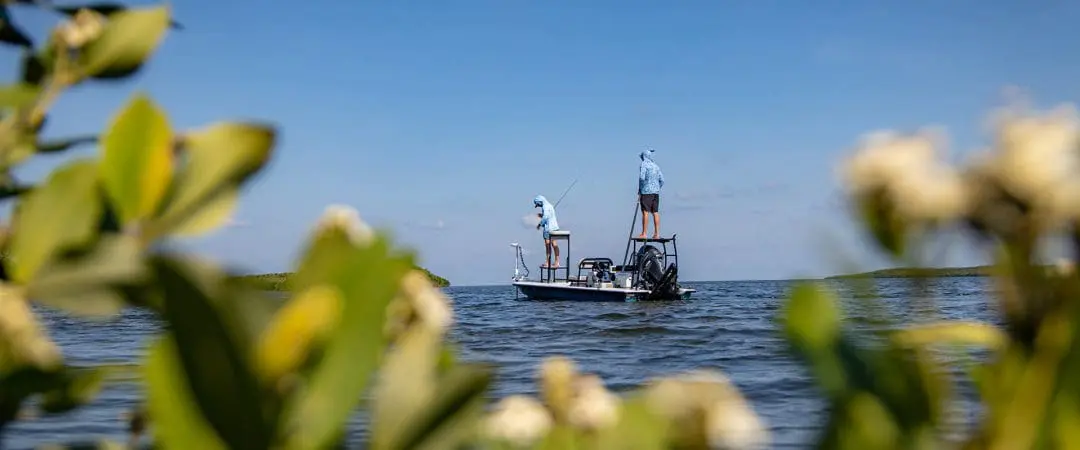
Sight fishing for redfish is a lot of fun
It involves spotting the redfish in the shallow waters and making a perfect cast to lure them in. Sight fishing requires keen observation and a bit of luck, as redfish are elusive and spook easily.
The adrenaline rush that comes with catching a redfish combined with the screaming of drag ripping out is what makes sight fishing Redfish, such an exciting sport.
Sight fishing for Redfish continues to gain popularity
Sight fishing for redfish is a popular sport in Louisiana as well as the Gulf Coast, where anglers can find plenty of redfish in the shallow waters. With the right gear and technique, anglers can experience the thrill of reeling in a big redfish just like in the Louisiana marshes.
Sight fishing for redfish is an exciting and challenging sport that requires patience, skill, and a bit of luck.

Improving you Chances of Catching Redfish
The best live baits for redfish include shrimp, crabs, and small fish such as mullet or menhaden, while lures such as soft plastics, topwater plugs, and spoons are also effective. Successful redfish fishing requires knowledge of their feeding habits, habitat preferences, and tidal movements.
Spotting the redfish:
The thrill of finding a redfish in the shallow waters and anticipating the catch.
Visual hunt:
Sight fishing is all about visually spotting the fish and making a perfect cast.
Catching Redfish:
The ultimate reward is landing a trophy redfish and the satisfaction of a successful sight fishing expedition.
Adrenaline rush:
As soon as the redfish takes the bait, the adrenaline starts pumping, making for an exciting fight.
Precision casting:
Making a perfect cast is crucial, as the redfish spook easily and require a precise presentation.

Redfish Roundup: Louisiana’s Year-Round Fishery
Louisiana is known for its excellent redfish fishery, with anglers from around the world traveling to the state to catch these hard-fighting game fish. Redfish can be caught in Louisiana’s waters year-round, but there are certain seasons and conditions that are particularly productive for targeting them.
Reeling in the Action: Targeting Louisiana Redfish by Season
Spring (March-May):
During the spring, redfish can be found in the marshes and backwaters of Louisiana, where they are feeding on shrimp and other small baitfish. Anglers often target them with artificial lures or live bait, casting around grass beds and other structure.
As water temperatures rise, redfish become more active and aggressive, making for exciting fishing action.
Summer (June-August):
Summer is a great time to target redfish in Louisiana’s deeper waters, such as near offshore rigs and other structures.
The warmer water temperatures cause redfish to move out of the shallows and into deeper water, where they are more easily caught using jigs, soft plastics, and live bait.
Fall (September-November):
As the weather cools down in the fall, redfish begin to move back into the shallows in search of food. This makes them more accessible to anglers, who can catch them using topwater lures, spinnerbaits, and other surface baits.
Fall is also a great time to target larger redfish, which are often found in schools and can be caught using live bait or soft plastics.
Winter (December-February):
While winter can be a challenging time to target redfish in Louisiana, it is still possible to catch them using a variety of techniques. Anglers often target deep holes and channels, where redfish are seeking warmer water temperatures.
Live bait such as shrimp or mullet can be effective, as well as artificial lures like jigs and spoons.
From Spring to Winter: Louisiana’s Versatile Redfish Fishery
Louisiana’s redfish fishery provides year-round opportunities for anglers to catch these prized game fish. Whether targeting them in the shallow marshes or the deeper waters offshore, there is always a chance to hook into a big Louisiana redfish.
A Few More Tips for Catching Redfish
6.) Move Slowly and Quietly:
Redfish have excellent hearing and can be spooked by loud noises or sudden movements. Move your boat slowly and quietly to avoid scaring them away.
7.) Look for Tail or Fining:
Redfish will often swim with their backs and tails exposed when feeding in shallow waters. Look for their tails or fins sticking out of the water, indicating their location.
8.) Cast Ahead of the Fish:
When sight fishing for redfish, cast your lure or bait ahead of the fish’s path, giving them time to notice and take the bait.
9.) Vary Your Retrieve:
Redfish can be picky eaters, so vary your retrieve speed and technique until you find what works. Some redfish prefer a fast retrieve, while others prefer a slower, more natural presentation.
Weather Conditions: Sight Fishing Redfish
Sight fishing Redfish in different weather conditions: Low wind, clear and sunny days are best and makes it easier to spot fish. Cloudy or windy conditions can make it harder to see fish movement and reduce casting accuracy.
Redfish tend to be more active during early mornings and late afternoons, and may retreat to deeper water during hot midday periods. Adapting your approach to the weather conditions can increase your chances of success.
Safety: As with all fishing activities, weather should be monitored before your fishing trip
Want to try some action packed redfish fishing yourself with world class charters?
Gulf Coast Inshore Fishing Trips & Charters

